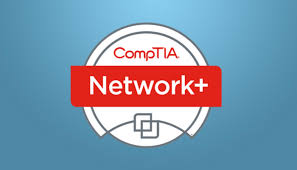Course Overview:
This course is very hands-on with respect to SP 800-53 controls as related to ICD-503, leveraging experience with DCD 6/3, and incorporating a broad array of technologies found in the field. Assessors and Auditors have to face many technologies that are not part of the main stream. TechNow has gone to great efforts to build a very broad, comprehensive, and complex lab to simulate many scenarios and architectures. Technologies such as a network appliance that is not a typical infrastructure product, a radio/satellite communications device, or many other technologies that build up a weapon system. Students learn how controls are integrated into many different devices and how they fit in the overall security architecture of monitoring, reporting, and compliance testing.
Directly discussed are overlays for different requirements i.e.: tactical, medical, network type: JWICS, SIPR; IC or AF. TechNow has developed a funnel concept to overlays to exemplify the encapsulation of a control within different requirements. TechNow has over 15 years experience in Trusted Solaris/Trusted Extensions and labeled security. Cross Domain overlays are presented that fits the work flow of an assesor. PII overlays and any overlays that an organization uses and can be made available are also presented.
This course allows the student to leverage years of experience in DoD DCD 6/34 for transition to the Risk Management Framework (RMF) applied to the Intelligence Community as mandated by ICD 503. Utilizing NIST SP 800-37 to establish a baseline of RMF knowledge, the student learns how to integrate the NIST pubs to provide cohesive information assurance architectures and compliance. ICD 503 scorecard evaluations are integral in demonstrating a successful ICD 503 compliance program. TechNow's ICD 503 course provides students with the skill to assess security programs and evaluate ICD 503 compliance to build an improvement and sustainable program for score consistency. TechNow's instructors have unparralleled expertise in federal compliance initiatives, and we bring this expertise instructing students on the complete life cycle of RMF.
More than a simple checklist, we instruct students not only how to validate essential security controls, programs, and metrics, but that they are operating effectively. The student leaves the course knowing how to: identify gaps where controls, programs, or metrics are incomplete, missing or ineffective, and provide actionable findings and recommend remediation strategies. Students learn to internalize NIST pubs to meaningul and effective IA guidelines and work with the Body of Evidence templates which include: Risk Assessment Report (RAR), Systems Security Plan (SSP), Security Assessment Report (SAR), and Plans of Action and Milestone (POAM).
TechNow training materials are aligned with the most recent set of National Institute of Standards and Technology (NIST), Committee on National Security Systems (CNSS), and Office of the Director of National Intelligence (ODNI) policies standards, processes, policies and instructions to be addressed/explained include ICD 503, ICS 503-1, ICS 500-16, ICS 500-18, ICS 500-27, ICD 502, NIST SP 800-37, NIST SP 800-30, NIST SP 800-53, NIST SP 800-53A, NIST SP 800-137, NIST SP 800-47, CNSSP 22, CNSSI 1253, and CNSSI 4009.
A majority of time is spent on in-depth compliance review of NIST SP 800-53 controls. Instruction discusses which method should be used to test and validate each security control and what evidence should be gathered. This course is not theory or death by power point. Real scenarios are presented as exercises. A complete live cyber range simulating the IC is utilized for hands-on labs for techniques of validating and documenting compliance of NIST SP 800-53 controls as related to ICD 503.
Date/Locations:
No Events
Duration: 5 days
Course Objectives:
- Establish a baseline of RMF knowledge
- Validate essential security controls, programs, and metrics
- DoD DCD 6/3 to ICD 503 Transition
- Lab Environtment and the Cyber Range
- Overlays: Tactical, Medical, Network type(JWICS, SIPR; IC or AF), Cross Domain, PII
- Risk Assessment Report (RAR)
- Systems Security Plan (SSP)
- Security Assessment Report (SAR)
- Plans of Action and Milestone (POAM)
Prerequisites:
Experience in the field of auditing and assesments.
Comments
Latest comments from students
Liked the class? Then let everyone know!
